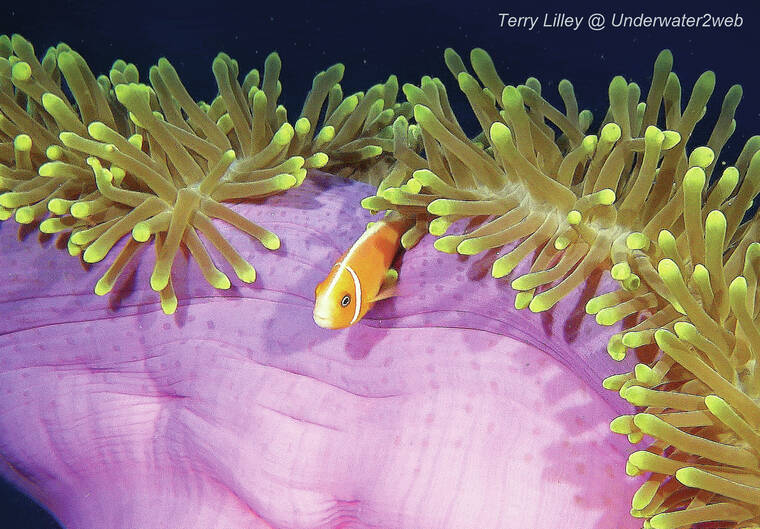The beautiful colors that highlight our shallow water coral reefs in Kaua‘i are produced, in part by photosynthesis within the algae that grows in the coral structure. The corals and marine life we see live within the first 150 feet deep of water, but over 90 percent of marine life species in the sea lives at much greater depths where the sun does not shine.
Over 70 percent of our planet is covered in water and life on land is directly connected with life in the sea, as they all evolved together. We are just now learning how important the sea creatures that live at the bottom of the sea are to our shallow water sea creatures. You can look at the deep sea as the heart that pumps the blood into the shallow arms that spread out over the sea surface. If you remove parts of the heart the arms will not survive.
Between Hawai‘i and western USA is a massive deep sea trench that covers over a million square miles of seafloor at depths down to 13,000 feet. This part of the ocean is called the Clarion-Clipperton Zone and it is being explored by scientists from Hawai‘i along with deep sea mining companies.
In several recent studies with deep sea remote vehicles, they found and have classified over 3,000 new species of marine life never before seen by human eyes. We share the planet with this amazing biodiversity and we need to protect it.
All of us use electronic devices these days and to make these machines work several types of minerals are needed. We all want smaller, faster computers and phones. but that may come at a cost to all life on earth.
The minerals used in the production of electronics have been mined from the earth’s surface in places that are easy to access and now jungles are being destroyed world wide to find the minerals that are hidden below.
Our need for rare earth minerals is increasing so companies are looking for new profitable ways to mine these minerals and the sea floor is quickly becoming the place to turn to because of our ability to send unmanned vehicles deep into the sea to search the seabed.
The International Seabed Authority is a United Nations-backed organization put into place to regulate deep sea mining and they recently announced they may soon grant deep mining permits to 17 companies to operate in the ocean between Hawai‘i and Mexico.
This may well be a huge mistake for the future health of our planet. Environmentalist like Sir David Attenborough are calling for a seabed mining moratorium until more studies are done so mining can be done in a sustainable way and not destroy thousands of species of marine life, many of whom we have not yet discovered.
If you have seen the new Avatar movie then you will know what theoretically could happen to earth if we mine out rare earth minerals. To stay healthy us humans need small amounts of these minerals in our bodies, but many species of marine life need concentrated amounts of minerals to live.
Corals, anemones, sponges and other creatures that live in deep water or shallow water caves use the minerals to produce their beautiful colors like the bright orange of Kaua‘i cup corals. They also use these minerals to reproduce and communicate. They get the needed minerals from saltwater and much of the dissolved minerals come from the seafloor.
Maybe it is time to step back and analyse just how important all the new technology is and slow down a bit to develop sustainable ways to live on earth without destroying the very heart that gives the earth and us life, which is more important than 5G cell service.
You can see a lot of the deep water colorful sea anemones, soft corals and sponges in my documentary movie I shot in Palau on my webpage at www.underwater2web.com. These beautiful creatures need the very same minerals we have in our cellphones, but they need the minerals to stay alive and reproduce.
We have the choice to buy products that don’t ruin their chance for survival and our long term existence living on this blue-green planet spinning among the stars.
•••
Terry Lilley is a marine biologist living in Hanalei Kaua‘i and co-founder of Reef Guardians Hawai‘i, a nonprofit on a mission to provide education and resources to protect the coral reef. To donate to Reef Guardians Hawaii go to www.reefguardianshawaii.org.


